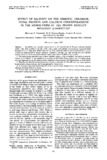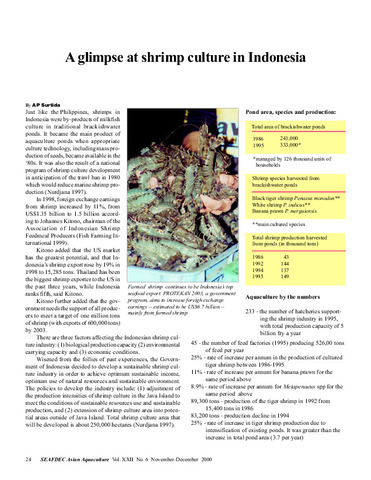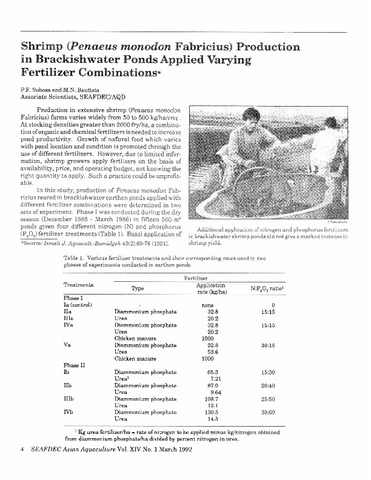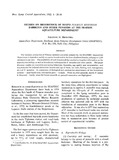Effect of salinity on the osmotic, chloride, total protein and calcium concentrations in the hemolymph of the prawn Peneaus monodon (Fabricius)

ดู/
Request this document
วันที่
1986Page views
246เมตาดาต้า
แสดงระเบียนรายการเต็มCited times in Scopus
Share
นามธรรม
1. Osmolality and chloride concentrations in the hemolymph of Penaeus monodon became stable 1 day after molting in 32 ppt, while total protein and calcium concentrations remained stable throughout the molting cycle. When intermolt (≥ 36 hr postmolt) animals were transferred from control (32 ppt) to experimental (8–40 ppt) salinities, osmolality, chloride and total protein, but not calcium, concentrations in the hemolymph achieved steady state values 24–48 hr after transfer.
2. The hemolymph osmolality was a linear function (slope = 0.28) of medium osmolality at salinities between 8 and 40 ppt. It was isosmotic to seawater at 698 mOsm (10 g prawns) and 752 mOsm (30 g), and was hyperosmotic to the medium below isosmotic concentrations, and hypoosmotic to those above.
3. Hemolymph chloride concentration was isoionic to seawater at 334 mM, and was hyperregulated below isoionic concentrations, and hyporegulated to those above.
4. P. monodon maintained its hemolymph calcium concentration between 6.4 and 10 mM when medium salinities increased from 8 to 40 ppt.
5. Total protein concentration in the hemolymph was independent of medium salinity (8–40 ppt) and hemolymph osmolality (540–850 mOsm).
Description
SEAFDEC Aquaculture Department Contribution No. 159.
การอ้างอิง
Ferraris, R. P., Parado-Estepa, F. D., Ladja, J. M., & de Jesus, E. G. (1986). Effect of salinity on the osmotic, chloride, total protein and calcium concentrations in the hemolymph of the prawn Peneaus monodon (Fabricius). Comparative Biochemistry and Physiology - Part A: Physiology , 83(4), 701-708. https://doi.org/10.1016/0300-9629(86)90713-9
เรื่อง
Taxonomic term
คอลเลกชัน
- AQD Journal Articles [1222]
รายการที่เกี่ยวข้อง
แสดงรายการที่เกี่ยวข้องตามชื่อผู้แต่งผู้สร้างและเรื่อง
-
A glimpse at shrimp culture in Indonesia
Surtida, Augusto P. (Aquaculture Department, Southeast Asian Fisheries Development Center, 2000) -
Shrimp (Penaeus monodon Fabricius) production in brackishwater ponds applied varying fertilizer combinations
Subosa, Precilla F.; Bautista, Myrna N. (Aquaculture Department, Southeast Asian Fisheries Development Center, 1992)Details are given of the production of Penaeus monodon in the Philippines reared in brackishwater earthen ponds applied with different fertilizer combinations, namely diammonium phosphate, urea and chicken manure. Results ... -
Studies on broodstock of sugpo Penaeus monodon Fabricius and other penaeids at the SEAFDEC Aquaculture Department
Primavera, Jurgenne (Cochin, India: The Marine Biological Association of India, 1982)For hatchery production of Penaeus monodon and other penaeid fry, the SEAFDEC Aquaculture Department is dependent mainly on captive broodstock in the form of ablated females, using up to 1,500 spawners in one year. The ...





